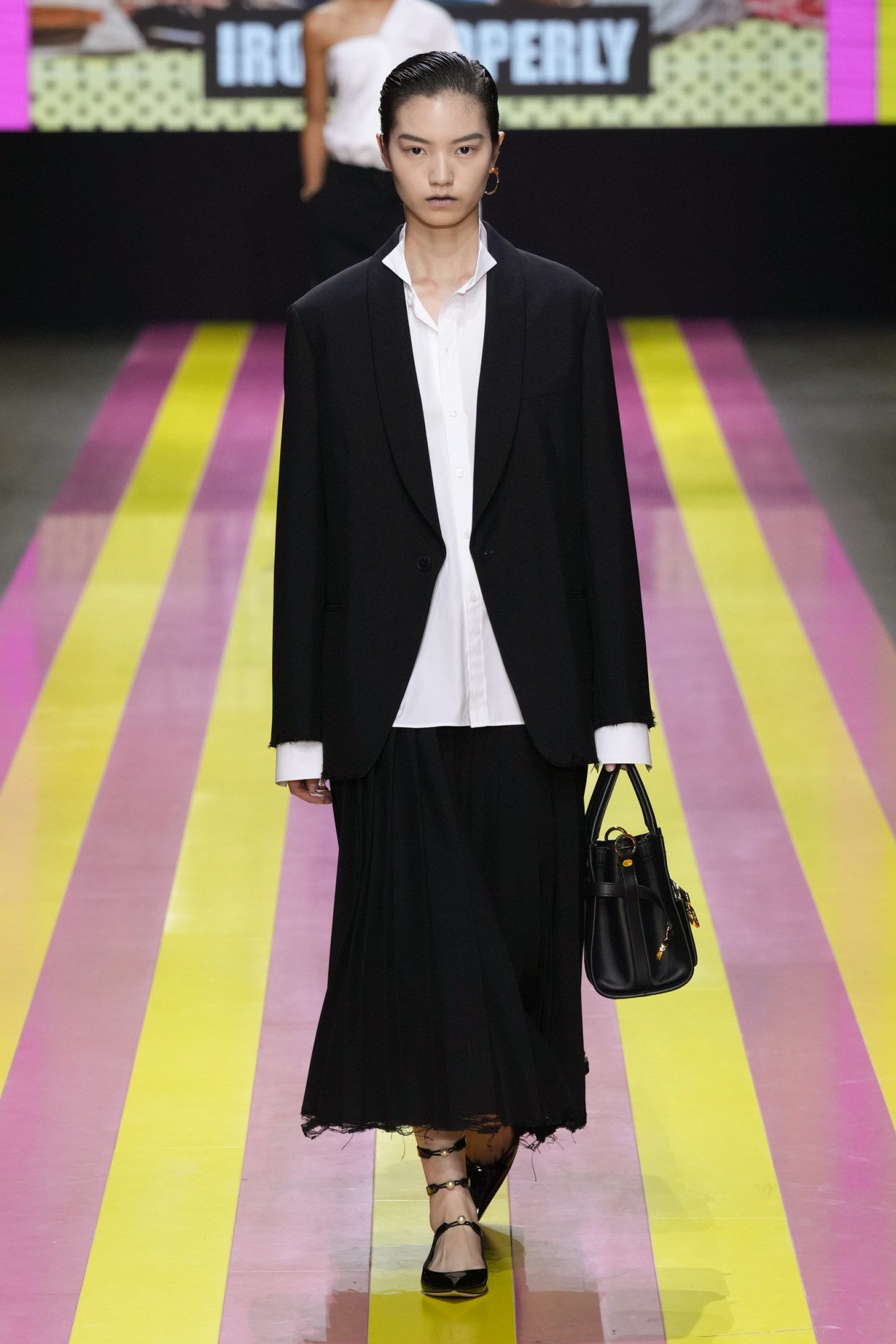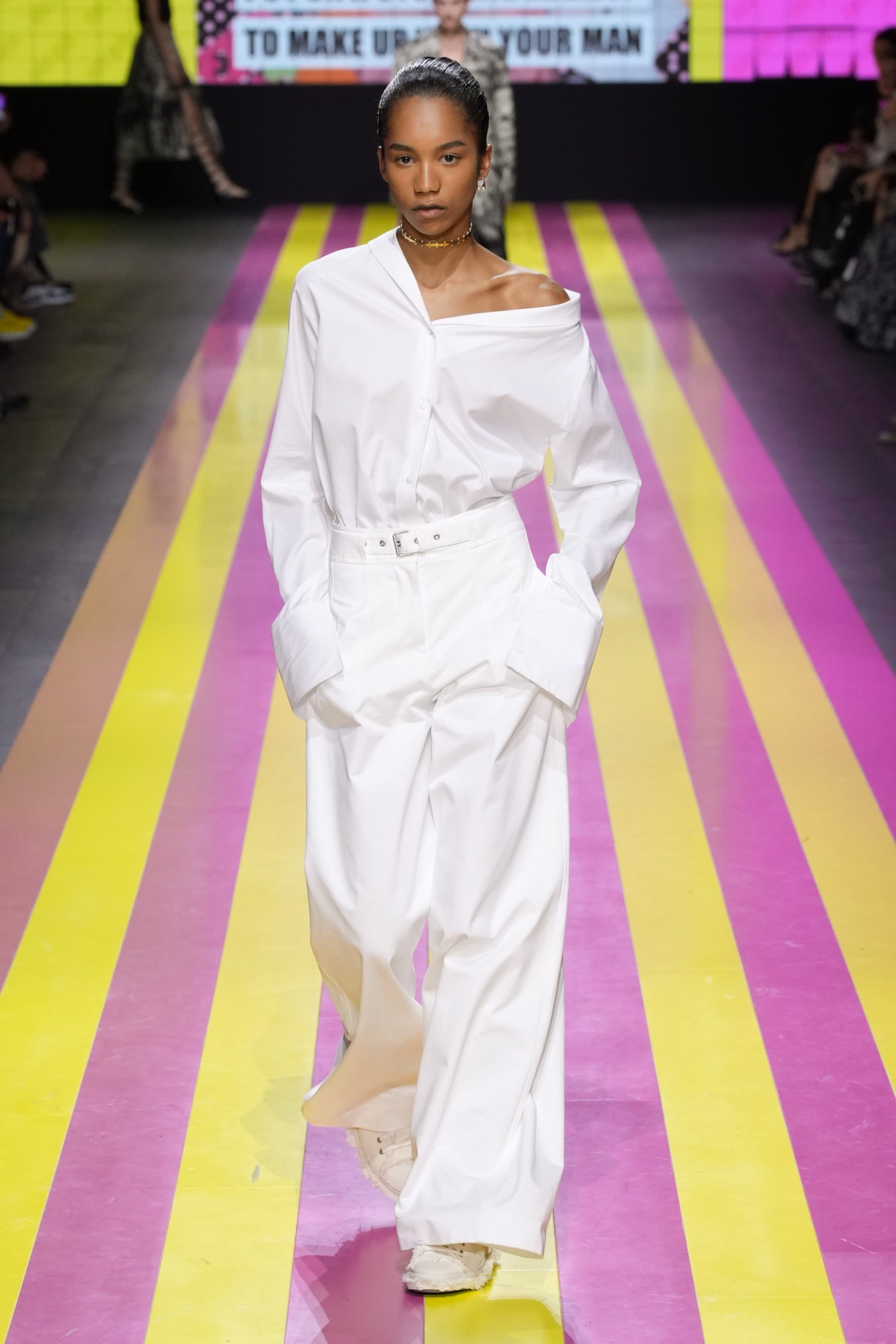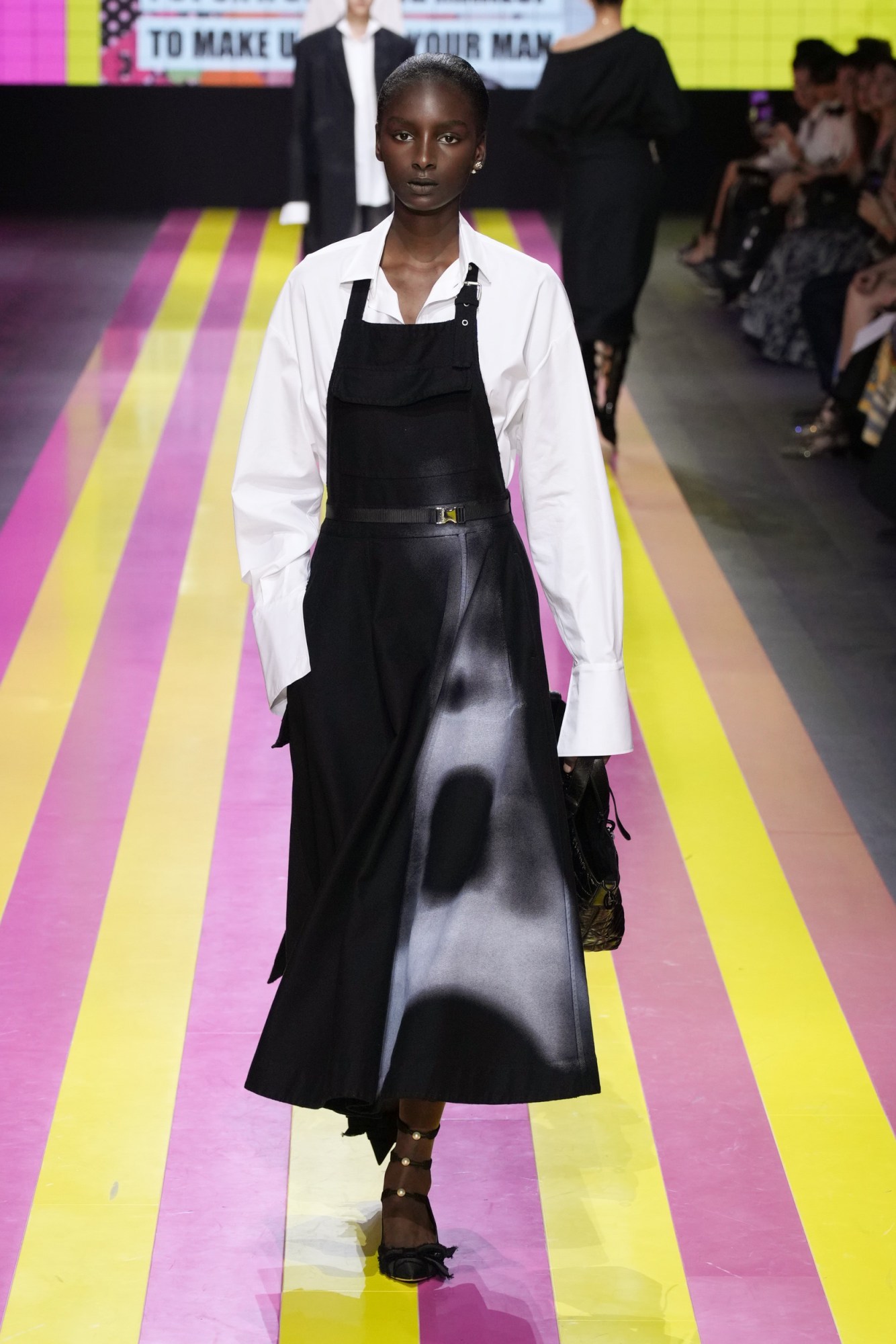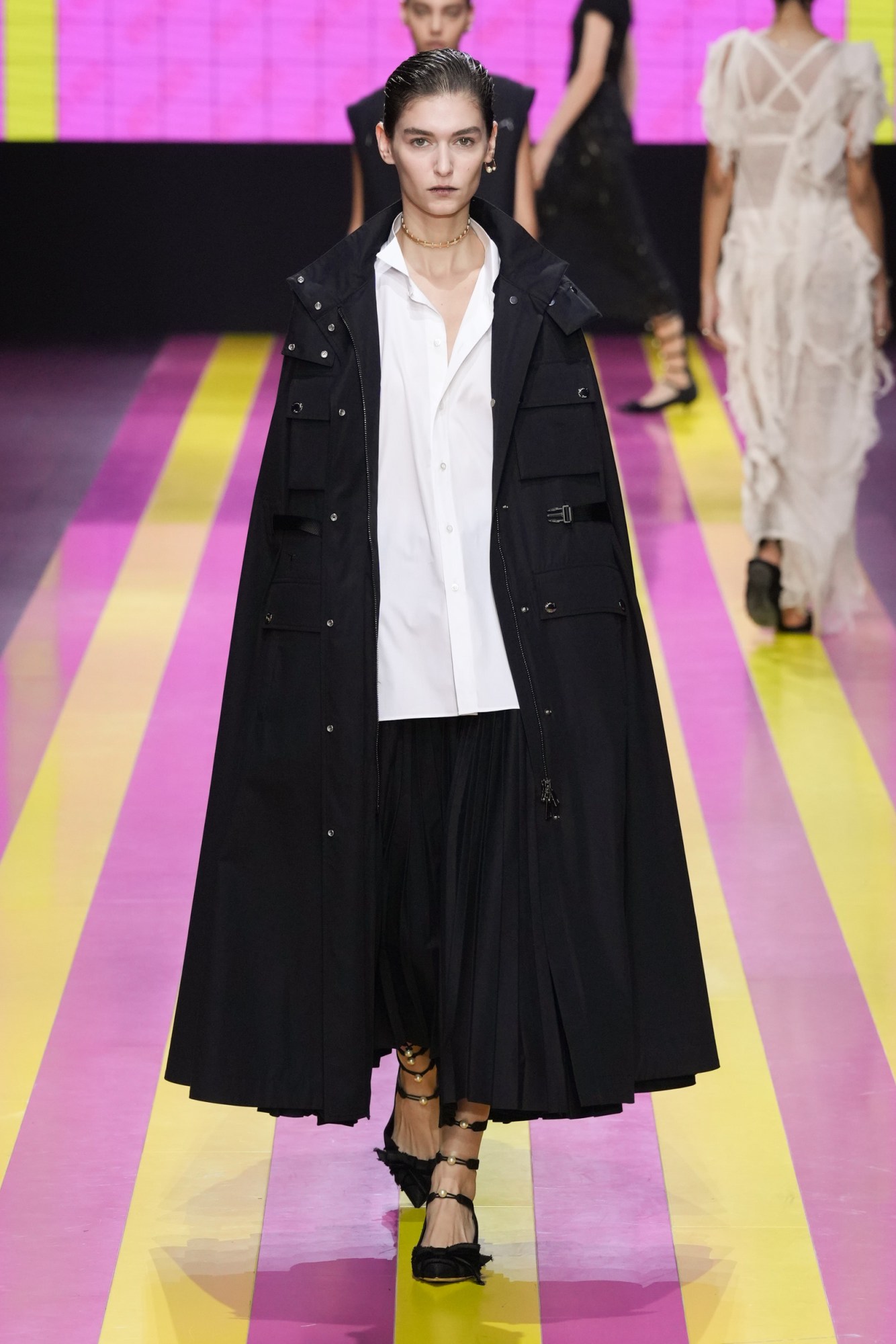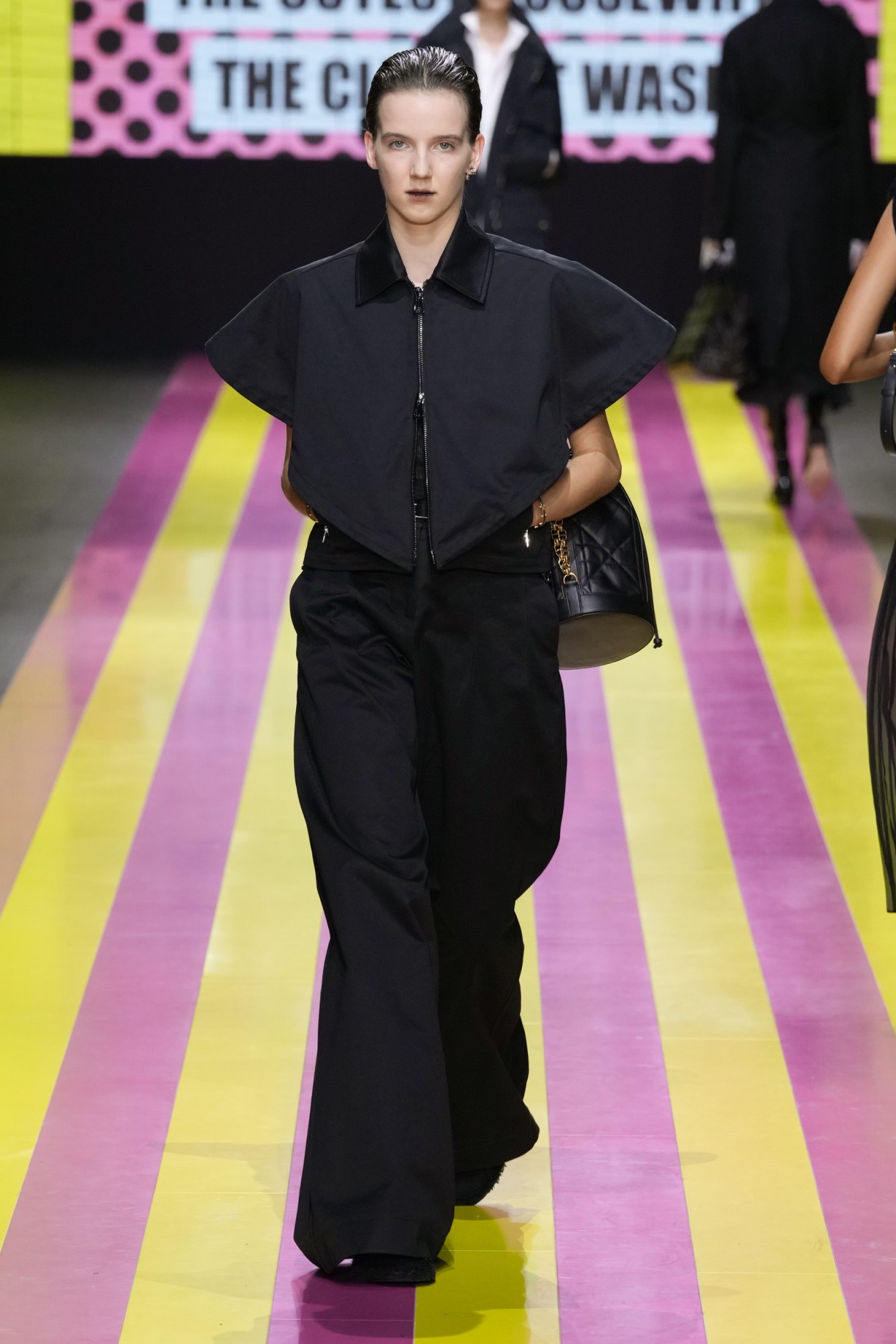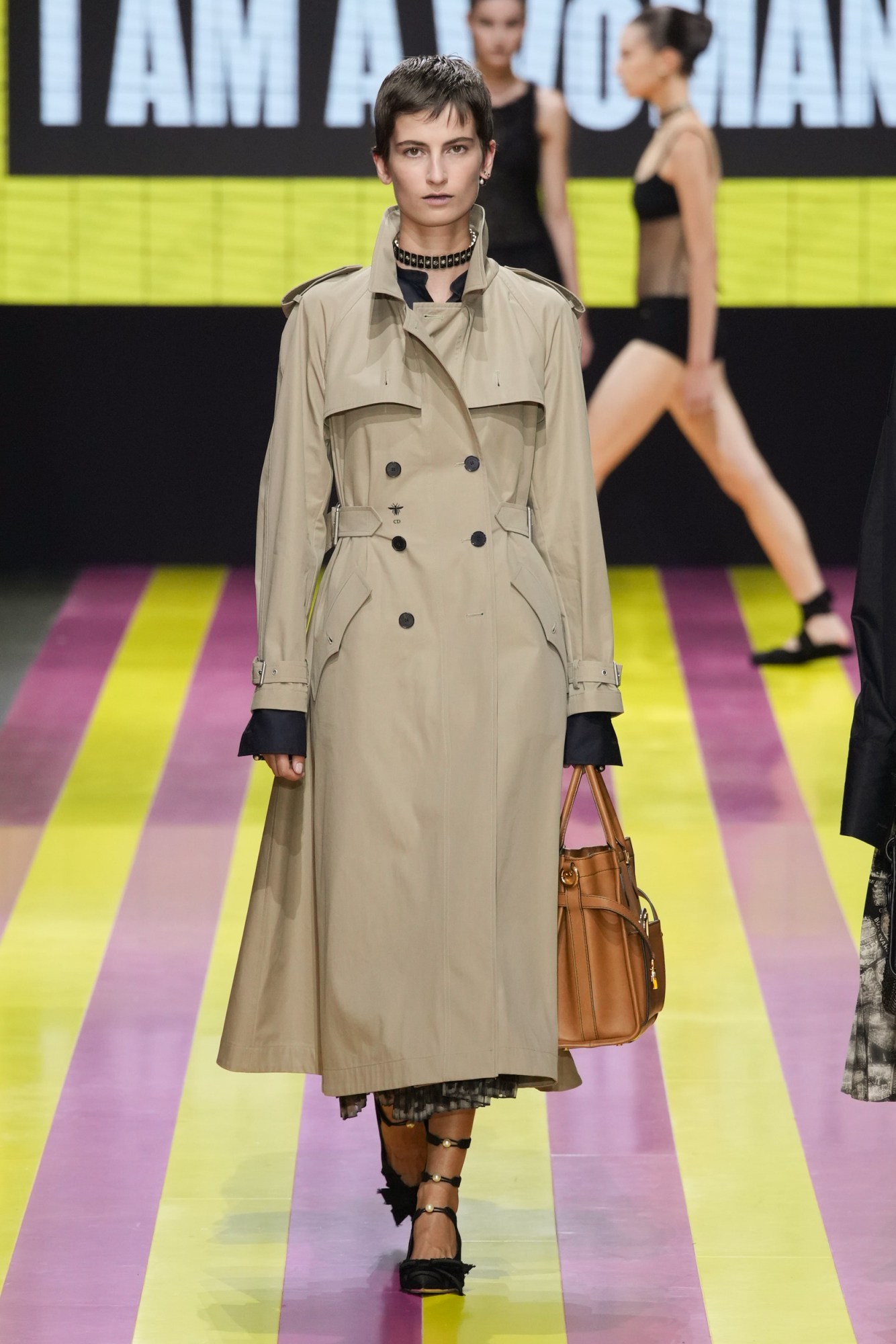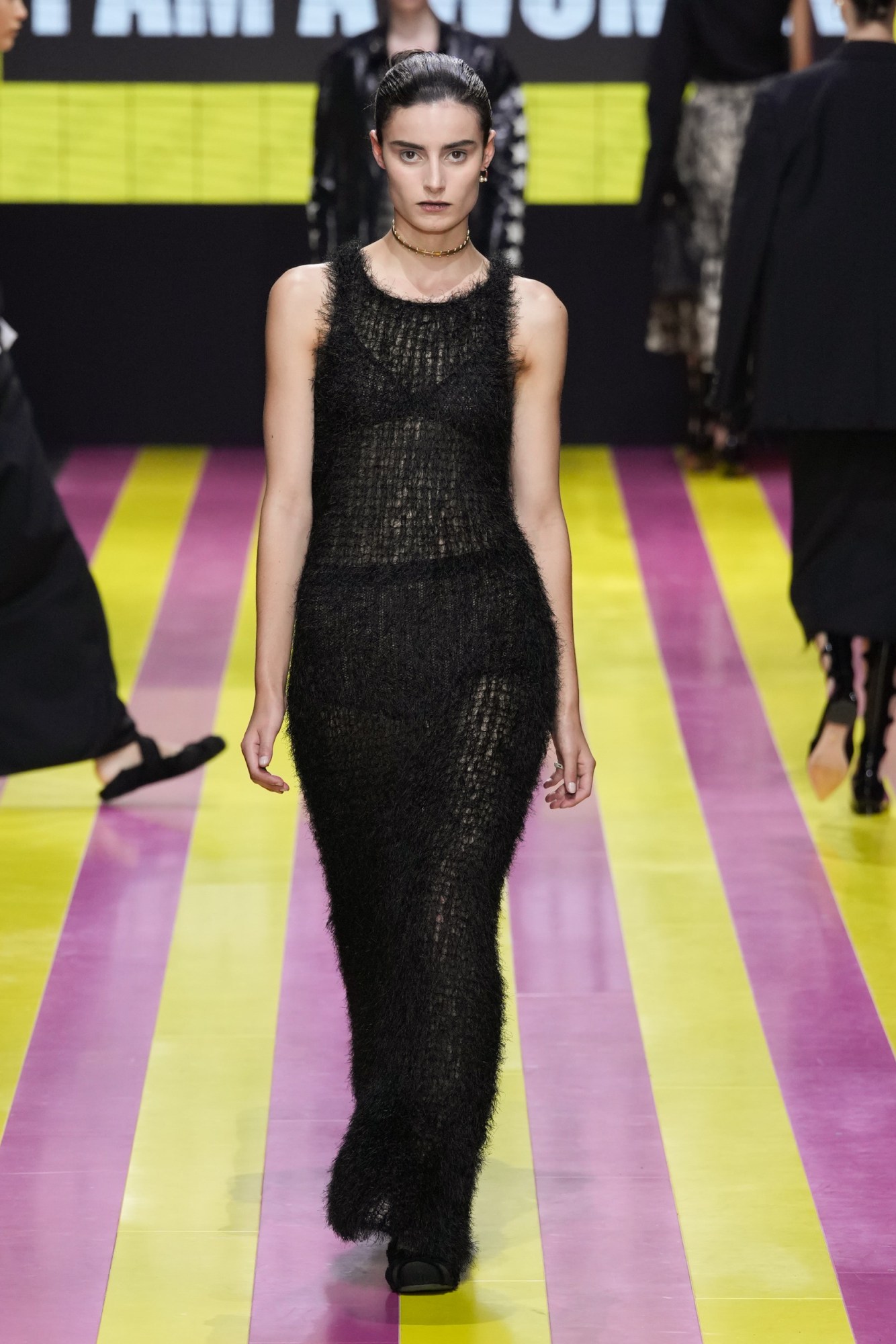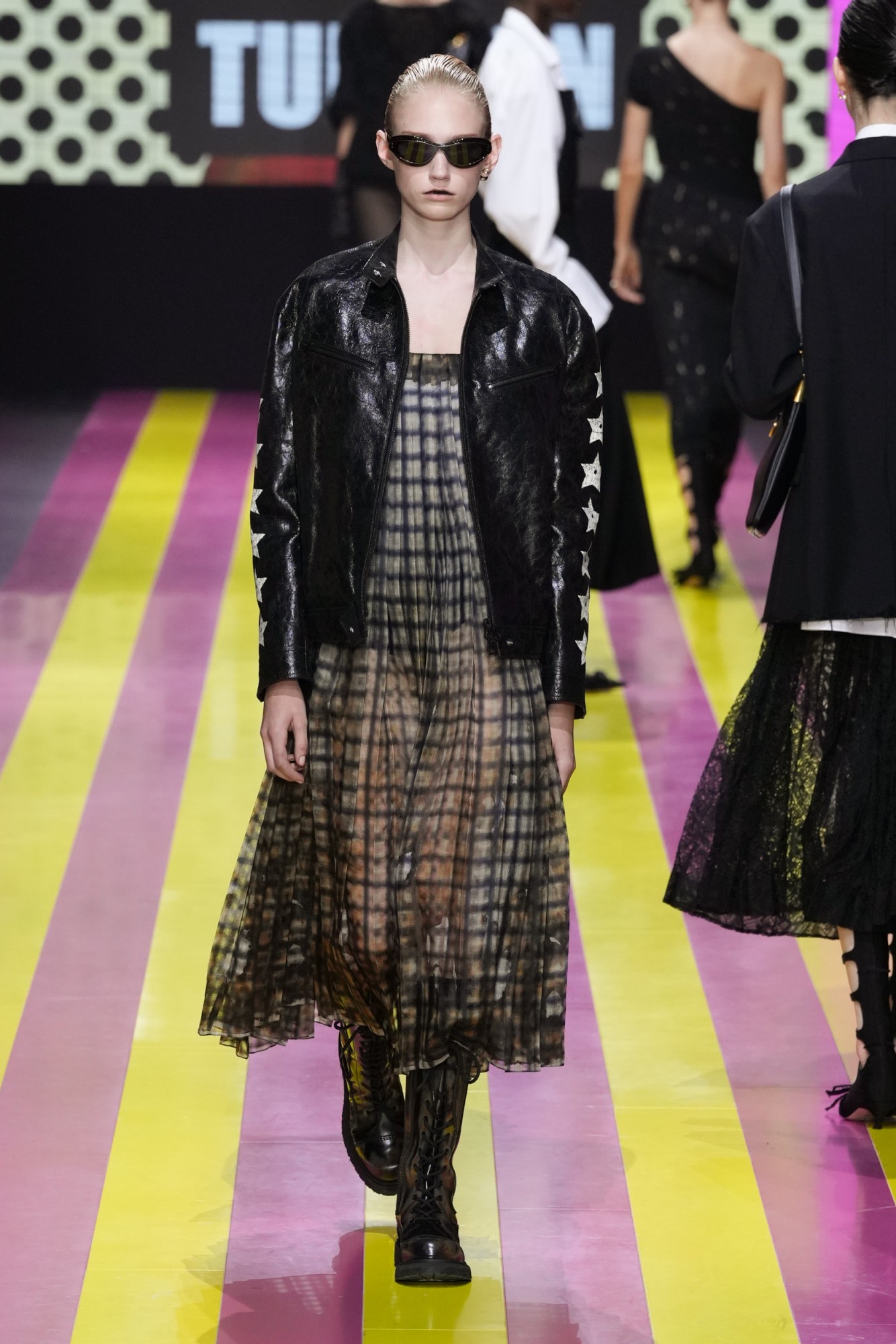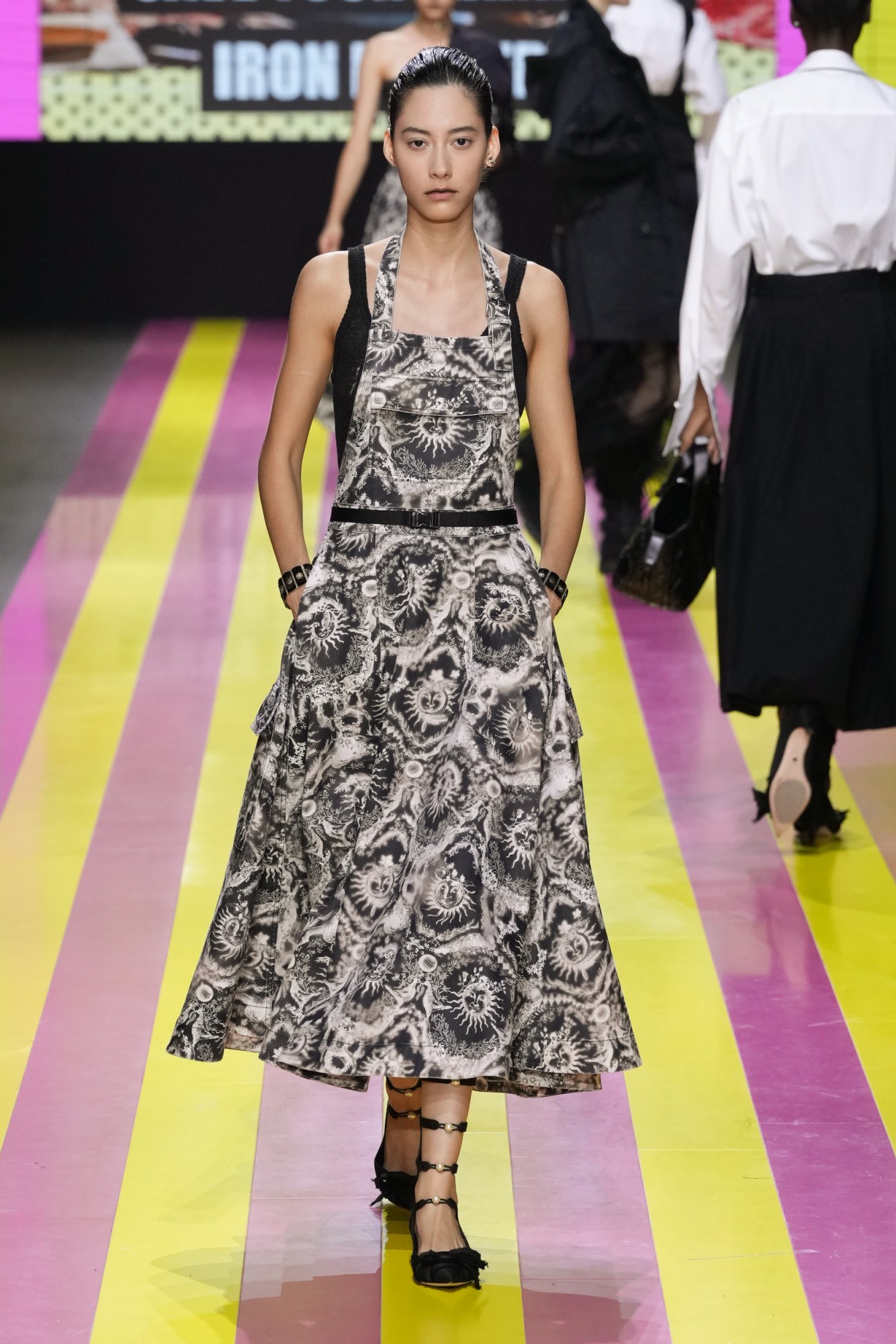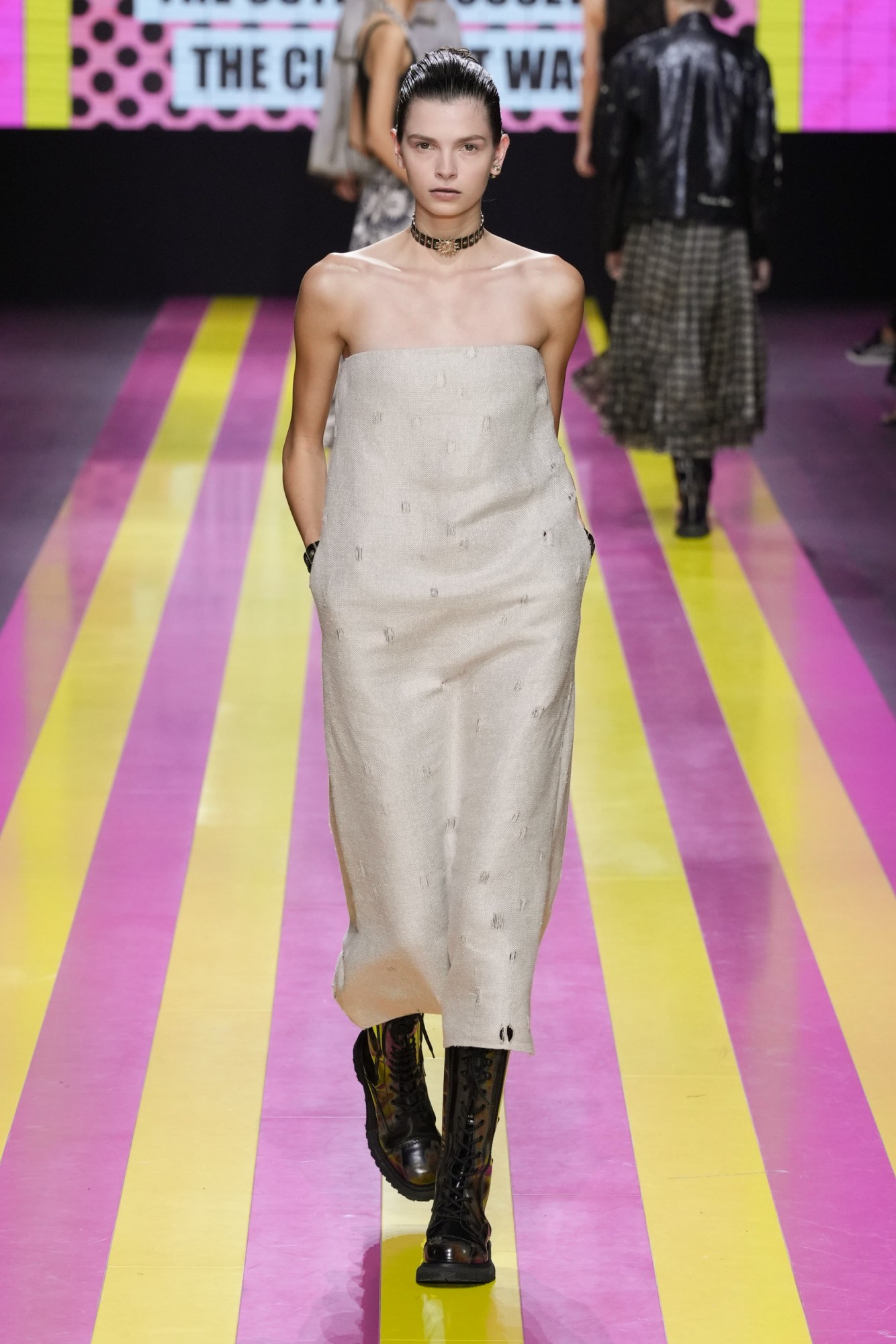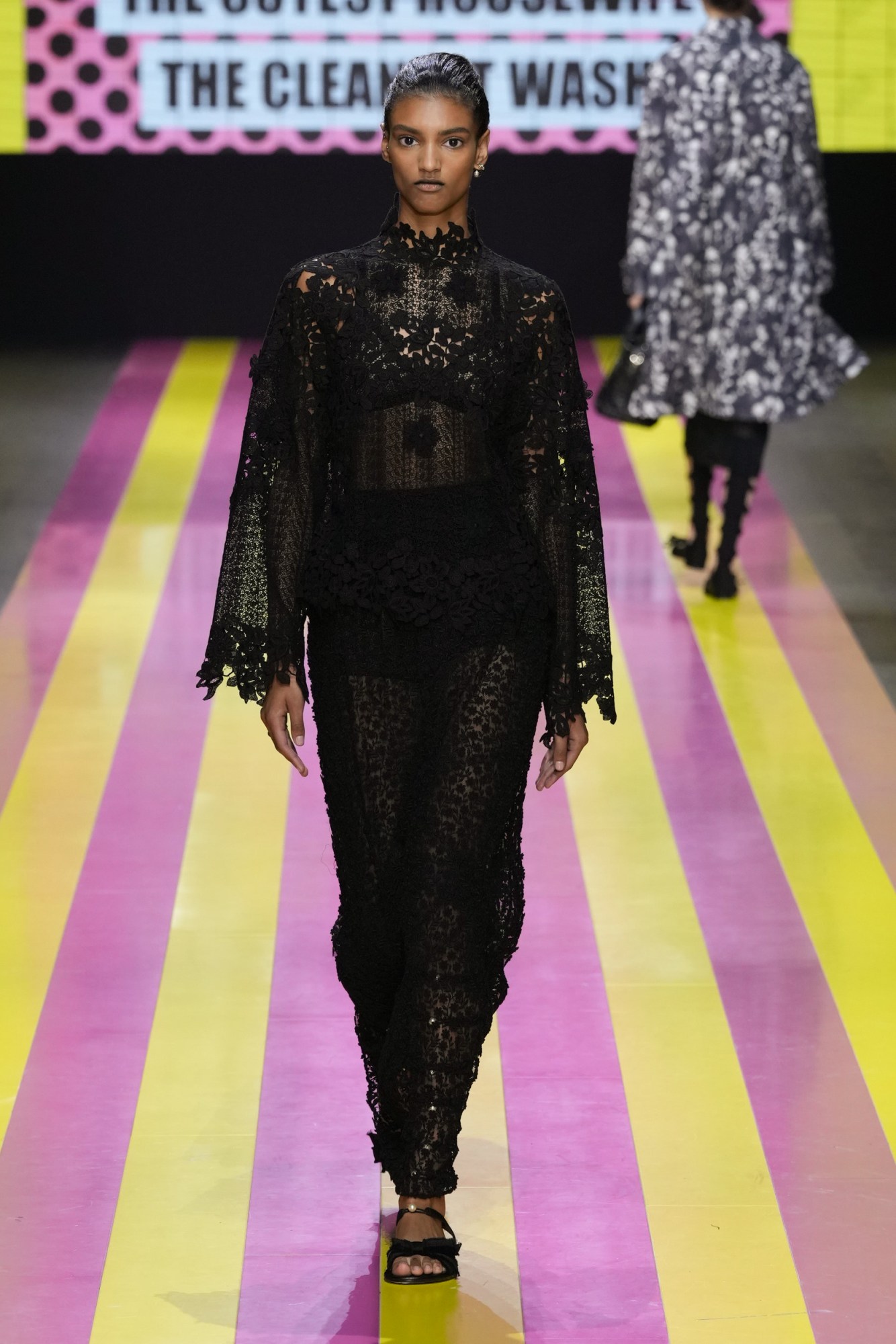What do Maria Grazia Chiuri and Rei Kawakubo have in common? If Dior’s latest collection was anything to go by, more than meets the eye. The French house is famously a symbol of floral femininity, a beacon of wasp-waisted tidiness and polite clothes that follow the exaggerated lines of the female form. These days, it is not a fashion house that customers flock to for radical or rebellious fashion. Yet, Maria Grazia Chiuri’s latest collection had more in common with the rebellious Japanese designers that arrived in Paris in the 80s and introduced radically worn-and-torn clothes to the canon of fashion history. Yesterday saw a Dior show brimming with distressed knits, ostensibly moth-eaten Bar jackets, singed ivory dresses, frayed hems, jauntily strewn shirts, and panels of chiffon floating like embers of a flame — all of which suggested a woman emerging from the ashes of ruin, which brings us to witches.
Maria Grazia Chiuri looked to witches as a symbol of proto-feminist heroines, women persecuted through the ages for not fitting into patriarchal conventions. She was led down the rabbit hole to Dior’s fortune teller and began examining the history of witches – those simply accused of being them and burned at the stake, and those who willingly gravitated towards the occult as a form of rebellion. Aesthetically speaking, her mood board was plastered with images of Ingrid Bergman as Joan of Arc, Maria Callas as Medea, Simone Signoret appearing in a film adaptation of Arthur Miller’s The Crucible.
But what was most interesting was that her collection was a notable refusal of Dior’s New Look, instead favouring looser workwear silhouettes and practical lace-up boots and dropped waists, which MGC described as “a rejection of the fashion industrial system which dictates women must conform to an hourglass idea of perfection”. But wait a minute? Isn’t this Dior, the house built on that hourglass silhouette, famously ripped off women’s backs in the streets of post-war Paris for being too nostalgic and frivolous? “Monsieur Dior always emphasised the waist, but I don’t want to do that anymore,” Maria Grazia explained before the show. “The idea that we have of Dior comes from the famous images of the New Look, where what you see is always a silhouette, a body. I want to see instead the woman’s face and think about her personality.
The show was set against a backdrop of video artworks by Elena Bellantoni, commissioned by Dior to reiterate the message of a collection which celebrated the ease of looser silhouettes, workwear clothing and practical lace-up boots. Just as the collection offered a riposte to the hyper-polished, the artworks seemed to parody Barbie pink by splashing retro images of housewives and secretaries, and of women bending over cars, shown alongside feminist slogans including: “Capitalism won’t take her where she really wants to go”. It may seem slightly dissonant from a house owned by the most valuable company in Europe, and the world’s richest man, but as Maria Grazia put it: “Women in fashion don’t have to be passive – we can be critics too.”


